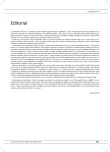An Improvement in Smooth Pursuit Eye Movements and Phonation Following Selective Dorsal Rhizotomy
Authors:
D. Hoza 1; M. Lašťovka 2; M. Bojar 3; R. Černý 3; D. Sturm 3; J. Kra us 4; P. Libý 1; M. Tichý 1
Authors‘ workplace:
Ne urochirurgické oddělení FN v Motole, Praha, 2Foni atrická klinika 1. LF UK a VFN v Praze, 3Ne urologická klinika 2. LF UK a FN v Motole, Praha, 4Klinika dětské ne urologi e 2. LF UK a FN v Motole, Praha
1
Published in:
Cesk Slov Neurol N 2009; 72/105(4): 378-382
Category:
Short Communication
Overview
Backgrounds:
Selective dorsal rhizotomy (SDR) represents a standard therapeutic technique for the treatment of spasticity. Besides reducing spasticity of the lower limbs, an improvement in motor skills of the upper limbs and an improvement in speech and eye movements have also been repeatedly documented in literature.
Aim:
The objective of this study was to objectify the improvement in phonation and eye tracking.
Methods:
Eight patients underwent videooculographic testing and 11 underwent acoustic speech analysis. The measured parameters were a deviation from basic frequency, shimmer, jitter and phonation index in the acoustic speech analysis and a correlation coefficient of the horizontal stimulus upon videooculography.
Results:
Seven of the eleven patients demonstrated an improvement in acoustic parameters; four subjects reported an improvement in eye tracking.
Conclusion:
Improvement in phonation and eye tracking following selective dorsal rhizotomy was objectified by testing techniques. The described suprasegmental effects of SDR can be explained by a possibly reduced response of the pathologic polysynaptic due to deafferentation, which developed following selective dorsal rhizotomy.
Key words:
rhizotomy – spasticity – ocular pursuit
Sources
1. Steinbok P, Reiner A, Be a uchamp RD, Cochrane DD, Keyes R. Selective functi onal posteri or rhizotomy for tre atment of spastic cerebral palsy in children. Revi ew of 50 consecutive cases. Pedi atr Ne urosurg 1992; 18(1): 34– 42.
2. Craft S, Park TS, White DA, Schatz J, Noetzel M, Arnold S. Changes in cognitive performance in children with spastic diplegic cerebral palsy following selective dorsal rhizotomy. Pedi atr Ne urosurg 1995; 23(2): 68– 74.
3. Bjornson KF, McLa ughlin JF, Loeser JD, Nowak- Co operman KM, Russel M, Bader KA et al. Oral motor, communicati on, and nutriti onal status of children during intrathecal baclofen therapy: a descriptive pilot study. Arch Phys Med Rehabil 2003; 84(4): 500– 506.
4. Loewen P, Steinbok P, Holsti L, MacKay M. Upper extremity performance and self-care skill changes in children with spastic cerebral palsy following selective posteri or rhizotomy. Pedi atr Ne urosurg 1998; 29(4): 191– 198.
5. Abbott R, Johann‑Murphy M, Shiminski- Maher T, Qu artermain D, Forem SL, Gold JT et al. Selective dorsal rhizotomy: o utcome and complicati ons in tre ating spastic cerebral palsy. Ne urosurgery 1993; 33(5): 851– 857.
6. Pe acock WJ, Sta udt LA. Functi onal o utcomes following selective posteri or rhizotomy in children with cerebral palsy. J Ne urosurg 1991; 74(3): 380– 385.
7. Ashworth B. Preliminary tri al of carisoprodol in multiple sclerosis. Practiti oner 1964; 192: 540– 542.
8. Shagass C, Roemer ER, Amade o M. Eye- tracking performance and engagement of attenti on. Arch Gen Psychi atry 1976; 33(1): 121– 126.
9. Lewin JE, Mix CM, Gaebler- Spira D. Self- help and upper extremity changes in 36 children with cerebral palsy subsequent to selective posteri or rhizotomy and intensive occupati onal and physical therapy. Phys Occup Ther Pedi atr 1993; 13: 25– 42.
10. Beck AJ, Gaskill SJ, Marlin AE. Improvement in upper extremity functi on and trunk control after selective posteri or rhizotomy. Am J Occup Ther 1993; 47(8): 704– 707.
11. Milner AD, Go odale MA. Two visu al systems re‑vi ewed. Ne uropsychologi a 2008; 46(3): 774– 785.
12. Hořínek D, Hoza D, Černý R, Vyhnálek M, Sturm D,Bojar M et al. Two cases of improvement of smo oth pursuit eye movements after selective posteri or rhizotomy. Childs Nerv Syst 2008; 24(11): 1283– 1288.
13. Urban PP, Rolke R, Wicht S, Keilmann A, Stoeter P,Hopf HC et al. Left- hemispheric dominance for articulati on: a prospective study on acute ischaemic dysarthri a at different localizati ons. Brain 2006; 126(3): 767– 777.
14. Lechtenberg R, Gilman S. Speech disorders in cerebellar dise ase. Ann Ne urol 1978; 3(4): 285– 290.
15. Amarenco P, Ha uw JJ. Paravermal infarct and isolated cerebellar dysarthri a. Ann Ne urol 1991; 30(2): 211– 213.
16. Ojemann JG, McKinstry RC, Mukherjee P, Park TS, Burton H. Hand somatosensory cortex activity following selective dorsal rhizotomy: report of three cases with fMRI. Childs Nerv Syst 2005; 21(2): 115– 121.
17. Wo ods TM, Cusick CG, Pons TP, Ta ub E, Jones EG. Progressive transne uronal changes in the brainstem and thalamus after long‑term dorsal rhizotomi es in adult macaque monkeys. J Ne urosci 2000; 20(10): 3884– 3899.
18. Steinbok P, Langill L, Cochrane DD, Keyes R. Observati ons on electrical stimulati on of lumbosacral nerve ro ots in children with and witho ut lower limb spasticity. Childs Nerv Syst 1992; 8(7): 376– 382.
Labels
Paediatric neurology Neurosurgery NeurologyArticle was published in
Czech and Slovak Neurology and Neurosurgery

2009 Issue 4
- Metamizole vs. Tramadol in Postoperative Analgesia
- Memantine in Dementia Therapy – Current Findings and Possible Future Applications
- Memantine Eases Daily Life for Patients and Caregivers
- Metamizole at a Glance and in Practice – Effective Non-Opioid Analgesic for All Ages
- Advances in the Treatment of Myasthenia Gravis on the Horizon
Most read in this issue
- Tumo urs of the Third Cerebral Ventricle
- Acquired Neuromyotonia with Minor Central Symptoms and Antibodies against Voltage- Gated Potassium Channels – a Case Report
- Botulinum Toxin in Spasticity Management
- Paroxysmal Kinesigenic Dyskinesi a – a Case Report of a Yo ung Woman with Alternating Hemidystoni a
